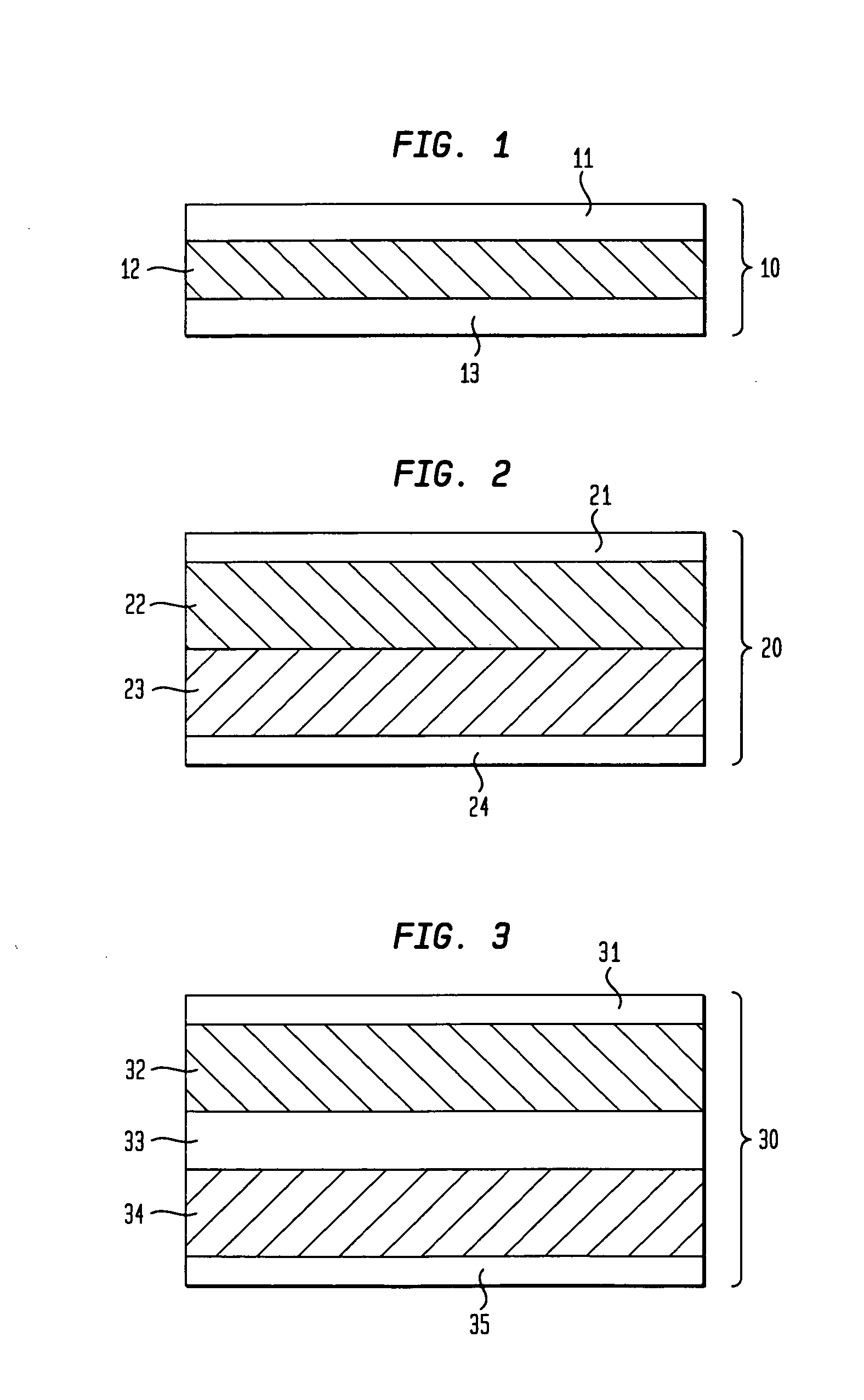Transdermal drug delivery systems comprising a coated release liner
- Summary
- Abstract
- Description
- Claims
- Application Information
AI Technical Summary
Benefits of technology
Problems solved by technology
Method used
Image
Examples
examples 1 to 13
Patches or Intermediate Laminates Containing a Thermally Cured Silicone Release Liner
[0115]A wet adhesive blend was prepared from light mineral oil, PIB (with a ratio of LMW / HMW of 55 / 45, the average LMW PIB is about 25000 to 35000 and the average HMW PIB is about 800,000 to 1,400,000 dalton) premix in heptane, CSD and clonidine base. The blend contains 32% solid by weight after removal of the volatile solvent. The blend was casted to a release liner as a thin film. The heptane is removed thermally. The adhesive film was laminated to a backing film Mediflex® 1200 to produce a laminate. A monolithic transdermal patch was made by die-cutting the laminate to an appropriate size and shape. The compositions of the resulting dry adhesive layer in the monolithic transdermal patch are described in table 1. An attempt was made to peel off the release liner from a patch or from an intermediate laminate. The results in table 1 indicate that no release liner could be peeled off or peeled off wi...
example 17 to 23
Peeling Off Release Liners From Aged Patches
[0116]Circular patches (10 cm2) are prepared by die-cutting intermediate laminates comprising a backing film (Mediflex® 1200), an adhesive layer comprised of 39% mineral oil, 48% PIB 955% Vistanex LM-LC and 45% MML-100), 5% CSD, 8% clonidine base, and a thermally cured release liner (Scotchpak™ 1022, Scotchpa™9744, Medirelease® 2249, Medirelease® 2226), or a UV-cured release liner Sil®Release Liner UV5A ) as described in table 2. The results in table 2 indicate that the peel force of a release liner from an adhesive layer was much higher when the release liner utilized was Medirelease® 2249, Medirelease® 2226, Scotchpak™1022 and Scotchpak™ 9744 than when the release liner utilized was Sil®Release Liner UV5A, which has a UV-cured silicone coating. The results indicate partial adhesive layer damage occurred when Medirelease® 2249, Medirelease® 2226, Scotchpak™1022 or Scotchpak™ 9744 were used as release liners. However, there was no adhesive...
example 24
Manufacturing of a Transdermal System Containing Two Adhesive Layers and a Membrane Layer
[0120]In this example, a drug reservoir adhesive layer was formed by casting a wet adhesive blend, which contains clonidine base, mineral oil, PIB, colloidal silicon dioxide and heptane (the wet blend has 32% solid by weight) to Sil® Release Liner UV5A film and drying the adhesive film in an oven. The dry adhesive film contains 13% clonidine, 47% mineral oil, 32.5% PIB (55% Oppanol B12 and 45% Vistanex MML-100) and 7.5% colloidal silicon dioxide by weight. The top of adhesive layer was laminated to a backing film Mediflex®1200 polyester side. The UV-cured release liner was easily peeled off without damaging the adhesive layer. This is the drug reservoir adhesive layer on backing film. A skin contact adhesive layer was formed by casting a wet adhesive blend containing clonidine, mineral oil, PIB, colloidal silicon dioxide and heptane to a Sil® Release Liner UV5A film and by drying the adhesive fi...
PUM
| Property | Measurement | Unit |
|---|---|---|
| Fraction | aaaaa | aaaaa |
| Fraction | aaaaa | aaaaa |
| Fraction | aaaaa | aaaaa |
Abstract
Description
Claims
Application Information
 Login to View More
Login to View More - R&D
- Intellectual Property
- Life Sciences
- Materials
- Tech Scout
- Unparalleled Data Quality
- Higher Quality Content
- 60% Fewer Hallucinations
Browse by: Latest US Patents, China's latest patents, Technical Efficacy Thesaurus, Application Domain, Technology Topic, Popular Technical Reports.
© 2025 PatSnap. All rights reserved.Legal|Privacy policy|Modern Slavery Act Transparency Statement|Sitemap|About US| Contact US: help@patsnap.com


